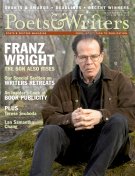In response to its 2004 report "Reading at Risk," which found that significantly fewer people read serious literature now than in years past, the National Endowment for the Arts (NEA) recently launched an ambitious program designed to reverse the trend. The Big Read, a joint project of the NEA and the Minneapolis-based nonprofit organization Arts Midwest, follows the template of the One Book program, developed in 1998 by the Washington Center for the Book in Seattle, in which teens and adults in one city are encouraged to read a specific book.
As part of the pilot phase of the Big Read, which began in February, arts organizations, literary centers, and libraries in ten U.S. cities have each chosen a single book from four selected by the NEA and Arts Midwest: Harper Lee's To Kill a Mockingbird, F. Scott Fitzgerald's The Great Gatsby, Ray Bradbury's Fahrenheit 451, and Zora Neale Hurston's Their Eyes Were Watching God. The local organizations, working with the NEA and Arts Midwest, have received grants ranging from fifteen thousand dollars to forty thousand dollars to carry out project-related activities, which include promotional campaigns on television and radio, and public literary events featuring local celebrities.
The ten cities participating in the pilot phase of the program were selected from a total of forty-five that applied. They are Little Rock, Arkansas (represented by the Arkansas Center for the Book); Enterprise, Oregon (Fishtrap, Inc.); Miami, Florida (Florida Center for the Literary Arts/Florida Center for the Book); Fresno, California (Fresno County Library); Huntsville, Alabama (Huntsville-Madison County Public Library); Buffalo (Just Buffalo Literary Center); Minneapolis (The Loft Literary Center); Boise, Idaho (Log Cabin Literary Center, Inc.); Brookings and Sioux Falls, South Dakota (South Dakota Center for the Book); and Topeka, Kansas (Topeka-Shawnee County Public Library).
"These ten cities and towns have been really brave in signing on for our maiden voyage," says David Kipen, the former San Francisco Chronicle book editor and critic who was named the NEA's literature director last August. "Mistakes are going to be made; we're going to learn things. So I think it's really gutsy of them." Kipen says the NEA plans to evaluate the program's success after the pilot phase of the Big Read is complete, in May. The goal is to expand the program to a hundred cities by 2007. The list of books from which the cities can choose is also likely to grow.
The NEA's "Reading at Risk" report, released in July 2004, revealed that the number of readers of literature—novels, short stories, poetry, and plays—was "in dramatic decline with fewer than half of American adults now reading literature." From 1982 to 2002, the study found, the number of literary readers in the United States dropped by ten percentage points, and the decline in the percentage of Americans who read literature appears to be quickening. "This report documents a national crisis," NEA Chairman Dana Gioia said at the time. "The decline in reading among every segment of the adult population reflects a general collapse in advanced literacy."
Despite this decline, dozens of cities across the country, as well as others in the U.K., Australia, and Canada, have adopted One Book programs in the last six years. The initiatives have been successful in some places, but, for a variety of reasons, less so in others. Kipen says Chicago and Seattle are two cities that embraced their One Book programs, but that the idea did not catch on as well in Los Angeles. "What happens in too many cases," he says, "is that you have cities concerned with picking up the trash on time undertaking an ambitious reading initiative, and unfortunately it doesn't command the full attention of local officials. How could it? And, alas, it fails to live up to its organizers' hopes."
How, then, does the NEA plan to ensure that the Big Read reaches potential readers? The key component, according to Kipen, is the NEA's partnerships with local arts organizations. "It's all very well to ignore a [program] when it's only coming at you from one direction. But when it's got its tentacles around you—not just from the city fathers but from some combination of the local library, the local arts center, the schools, the chamber of commerce, the newspapers, the public radio station, the public TV station, the commercial TV stations, and heaven knows who else—it's an octopus that becomes much harder to avoid," he says. "Partnerships don't take a huge outlay of money, either, just a bunch of citizens as scared as we are of turning into a nation without readers. When that's the alternative, you'd be surprised how willing folks are to put in a little overtime, whether in my office or around the country."
Though the NEA won't know precisely what impact the Big Read might have until the next U.S. Census, in 2010, Kipen plans to travel to as many of the participating cities as possible to gather anecdotal results. "I want to see firsthand what works, what doesn't," he says. "I want to see the expression on somebody's face as he's realizing that good books aren't medicine—they're food."
Kevin Canfield is a journalist in New York City.








